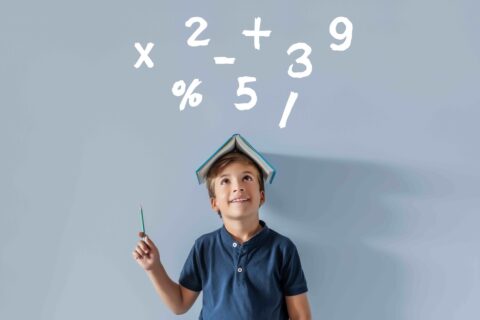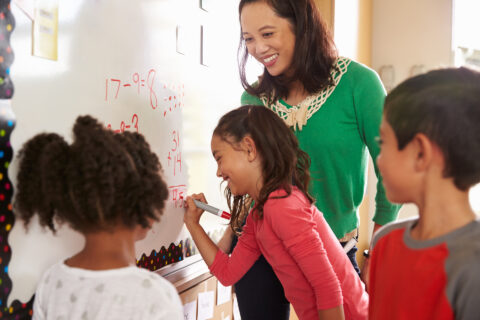As English teachers, we often use analytical writing assignments to assess reading comprehension and understanding. However, one underutilized method for engaging with text is creative writing.
English teachers have been using close reading and passage analysis for years to highlight important moments in stories and to help students dig into word choice to produce a concise, formal written analysis. But what happens when a student tries to put herself or himself into a character’s metaphorical shoes?
Creative writing increases empathy
Engaging in this type of creative writing task changes the exercise from an external literary analysis to an internal view of a character’s feelings and emotions. One goal of the creative writing exercise – and reading in general – is to create empathy and develop students’ theory of mind, which involves understanding why someone acts in a particular way or predicting how someone will act. (1)
Empathy and theory of mind are both central to social cognition, and researchers have determined that character-driven stories consistently lead to the synthesis of oxytocin, a hormone which motivates cooperation with others by strengthening one’s sense of empathy. (2)
And improves memory
In addition to enhanced social cognition, an important outcome of this creative writing task is the improvement of memory. Using stories to learn activates the brain’s positive emotional state and transfers the information more readily into memory. (3)
For students with strong memory or those who love the story, remembering events and scenes may not be that difficult. But what about students who do not necessarily connect with the storyline or characters? What could help them remember key scenes? To answer this question, we asked our students to engage in the exercise of writing from the perspective of another character.
An fMRI study found that when participants continued to write creatively from a literary text that was given to them, the areas of their brain at work were those involving language processing, working memory, and the long term memory system. (4) We saw this impact firsthand; while engaged in this creative writing task, students juggled a myriad of cognitive tasks, including remembering plot details, character traits, common language used by the character, and the context of the scene students were asked to recreate.
Our classroom experiences
When students in English 8 were asked to choose a character from the jail scene in “To Kill a Mockingbird,” the scene in which Atticus is guarding Tom Robinson from racist farmers who want him dead, students chose a range of perspectives. They had to play with words and sentence structures; they were even allowed to break traditional grammar rules for the sake of artistic license. One English 8 student wrote the following from Atticus Finch’s perspective:
“My mouth is frozen open, my fists clenched tightly, and my heart still beating way too fast. Scout’s voice wrenches at something inside of me and I look away from Jem, who stands in front of me with his own fists clenched at his sides. He has my eyes… A prideful voice whispers inside of me as I turn to look at my daughter, he has my hair too… As my gaze lands on Scout, my heart slows its anxious thrum.”
When a student creates and writes like the above character, they are an author too. Thinking about which words to choose and which feelings to evoke creates a deeper connection to the moment and, therefore, creates a stronger memory of the plot and characters. Recreating this particular scene from Atticus’s perspective could have even more lasting effects as studies have found that when students discover meaning in characters’ good deeds, they are often motivated to act more virtuously as well. (5)
We asked our 11th grade students to do the same creative writing exercise for our unit on “The Great Gatsby.” Incorporating more choice for our older students, we asked them to pick from a select number of scenes in addition to choosing the character whose perspective they wanted to adopt. Some students not only used language common to the character, but also incorporated literary devices such as foreshadowing and irony. For example, one student wrote from the perspective of Myrtle Wilson shortly before she dies:
“She looks so out of place. I should be sitting next to him, not her. But that car is so… It’s unforgettable. That car is something else. If I was in that car, I would leave quite an impression on anyone who should look. It definitely will leave an impression on me.”
The benefits of this assignment multiply when you ask students to read their work aloud so that they can appreciate each other’s creativity and remember the scenes and emotions of the characters more clearly. When reading, hearing, and writing stories, our brains are wired to focus on the characters’ thoughts and feelings (6) — if stories are memorable, it is because of the people within them. If students can connect to characters, they can more easily learn from them, choosing which qualities they want to avoid and which they want to emulate. Creative writing that incorporates choice, empathy, and memory empowers students to become authors, both of the story they are rewriting and of their own life stories.
About the Authors
Liz Regan Kiingi teaches English at St. Andrew’s. Julia Dean is the former CTTL Academy Program Coordinator and Innovation Associate and an English teacher at St. Andrew’s who is now pursuing graduate studies.
This article was originally published in Volume 4 of “Think Differently and Deeply” (2020).
Citations
(1) Theory of Mind: Understanding Others in a Social World. Psychology Today. Retrieved January 9, 2020, from https://www.psychologytoday.com/blog/socioemotionalsuccess/201707/theory-mind-understanding-others-in-social-world.
(2) How Stories Change the Brain. Greater Good. Retrieved January 9, 2020, from https://greatergood.berkeley.edu/article/item/how_stories_change_brain
(3) The Neuroscience of Narrative and Memory. Edutopia. Retrieved January 9, 2020, from https://www.edutopia.org/article/neuroscience-narrative-and-memory
(4) Shah, C., Erhard, K., Ortheil, H.-J., Kaza, E., Kessler, C., & Lotze, M. (2013). Neural correlates of creative writing: An fMRI study. Human Brain Mapping, 34(5), 1088–1101. https://doi.org/10.1002/hbm.21493
(5) Gotlieb, R., Jahner, E. E., Immordino-Yang, M. H., & Kaufman, S. B. (2015). How Social-Emotional Imagination Facilitates Deep Learning and Creativity in the Classroom. Retrieved from https://scottbarrykaufman.com/wp-content/uploads/2016/07/CUUS2378-17_Proof_ RG_061016.pdf(6) Yuan, Y., Major-Girardin, J., & Brown, S. (2018). Storytelling Is Intrinsically Mentalistic: A Functional Magnetic Resonance Imaging Study of Narrative Production across Modalities. Journal of Cognitive




